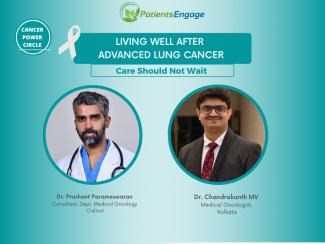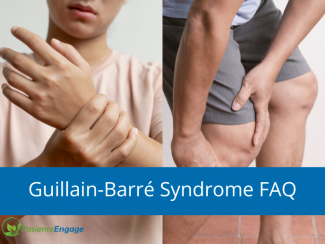
On the occasion of World Cancer Day, Dr V Shanta, Chairperson of Adyar Cancer Institute, Chennai, a doyenne in her field, talks to PatientsEngage about the challenges of tackling cancer in India.
“India has state of the art facilities but it does not reach everyone.”
PE: There are many differing views on how frequently one should have mammograms. You have said that annual mammograms are unnecessary.
Dr. Shanta: I believe that we do follow the general guidelines laid down globally based on long-term follow up. But some of these can be changed based on one’s own experience and individualised in a particular situation – the history of the individual, type of breast, breast density, associated conditions etc. We should ensure that by having too many investigations, we do not create phobias.
I can only speak about what I do. Different oncologists have their own ways.
PE: What is the greatest drawback in India to cancer treatment reaching its fullest potential?
Dr. Shanta: The drawback in India would mean an environment of limited resources, inadequate awareness, lack of education, long distances to travel for treatment, lack of integrated health care, economic and social disparities and many more. It has also to take into account limited specialised facilities, wide gap in available facilities between government hospitals/health providers as against corporate centres and specialised centres.
It will also include increasing, almost spiralling cost of medicare in general, especially cancer management.
Another issue will be definition of good oncologic practice, ethical, patient centric practice. The variations are enormous. The gap between the best, the average and the worst vs. state of the art is a reality. Significant numbers of patients are treated by non-specialists.
Although specialisation is important, it has also created a number of other issues – increasing cost of medicare, ethical issues etc.
India has state of the art facilities but unfortunately it does not reach everyone. It is difficult therefore to pinpoint any specific reason for the unenviable situation of cancer care in India. Corporatisation is a major factor in non- accessibility for the under privileged. It can improve with a better National health policy with stress on primary care and prevention.
PE: What have been the milestones that you have seen in the 60 years of your involvement in cancer treatment?
Dr. Shanta :
1. The change in cancer horizon over the last 6 decades has been phenomenal. There is no doubt that we have moved from an era of incurability to curability, in the common accessible cancers – cervix, breast and tobacco related cancers.
These are not only curable in the early stage but preventable.
2. Paediatric cancers are truly a success story. In 1954, I hardly had 1% of my pediatric cancers come back cured. Today, 65% of acute lymphatic leukaemias, 80% of stage I & II lymphomas (Hodgkins Disease) and others are cured and go through normal milestones of life, become adults with normal social life.
3. Improvement in quality care – organ conservation in breast cancer, osteo sarcomas (limb salvage surgery), laryngeal and rectal cancers and few others.
4. Phenomenal enhancements in precision diagnostics and precision radiotherapy.
5. Introduction of molecular diagnostic in diagnosis, treatment planning monitoring, etc.
6. Minimally invasive surgery.
PE: Are the underprivileged communities the biggest victims of cancer? What can be done about this?
Dr. Shanta: Yes, in a way it is true. (Not only the underprivileged but also the mid-income group.). Basically a result of poor SES (SocioEconomic Status) which includes poverty, poorer education and related issues.
India has to work out a National Health Policy that is “socioeconomic centric”. I am not sure that it carries the message I want – It is something like in oncologic practice. We say “patient centric”.
Unfortunately, health planners in India do not seem to appreciate the magnitude of the problem of cancer. The latest drafted National Health Policy has no reference to cancer except as one of the N.C.D.s (Non-communicable Disease)!!
As for Tobacco Control, which is vital for cancer control (40% of cancers in men are tobacco related), acts and rules exist but implementation is inadequate.
There must be more political will – as in Brazil, Thailand and few other developing countries.
PE: What are the screenings that are a must for women?
Dr. Shanta: Yes, it is a must. We have 3 sites which are easily accessible and have established sensitive and specific screening methods. They are easily accessible. They are cervix, breast and oral cavity. The problems are
1. Accessibility to these diagnostic centres and therapeutic centres if diagnosed as cancer
2. Qualified personnel
- Screening – annual cancer directed check up advisable
- Screening need not only be a planned annual screening
It can be opportunistic screening as well.
All married women over the age 30 attending any hospital or clinic for any complaint can have a gynae check up and breast examination as part of clinical exam. It should ideally be done only by women.
This needs commitment and motivation. I am not in a position to quantify this.
PE: What is the next frontier in cancer treatment?
Dr. Shanta :
First and foremost – we must ensure that what has been achieved, the state of art treatments must be accessible, affordable and equitable. It should reach everyone who needs it.
Next frontier
Phenomenal advances are happening globally.
Personalised medicine and care will depend on advances in molecular oncology, genetic research and how soon it can come from the laboratory to the bedside.
Use of Nanotechnology in enhancing early detection, prevention, improved and more effective drug delivery etc.
I am afraid that I am not adequately updated on many more ongoing sophisticated technology in research.
Apart from research and technologic advances, one important issue that I would like to stress is the creation of best practice clinicians committed to ethical practice and meet the challenge of humanism.
PE: What can we do to increase awareness of cancer risk and treatments available?
Dr. Shanta: Whatever possible is being done/attempted. The obstacles are many. We will continue as energetically as possible. A better organised programme like what was done for polio, blindness, leprosy, AIDS etc. should be done. We need commitment and motivation at a National level.
PE: Please share one treatment story that is close to your heart.
Dr. Shanta : As I take a walk down memory lane, I remember Padmaja, 22, a bright girl, who was a Research Fellow in the physics department at IIT-Madras. She came with unaccounted fever, and a diagnosis of acute leukaemia was made (1987). With scientific management and the newly available chemotherapeutic drugs, she achieved complete remission and remained so. She continued her studies and took her doctorate. Five years later, in 1992, she asked me: “Can I go abroad for higher studies”? I said: “Why not”? She queried: “What about my follow up”? I said: “you don’t need any, except occasional checks. You are cured.” She was delighted. She applied for a Commonwealth Fellowship and was duly selected. But then came the bombshell — the Medical Board rejected her on health grounds. She came running to me. “Madam, you told me I was cured but see what has happened.” I was furious. That was the perception of cancer then in India. Since I could not convince the local office, I wrote to Dr. Ray Powles, Head of the Department of Leukaemia at the Royal Marsden Hospital, requesting his intervention. After a few consultations with the U.K. Commonwealth authorities, Dr. Padmaja’s fellowship was cleared. She went to the U.K. and completed her fellowship.
She married a colleague and has settled down in the U.S. since 1997. She is happily married with children, and is busy with academic work.
PE: Your thoughts on end of life care?
Dr. Shanta : Discussion or comments on this is not easy. I will put down my thoughts very briefly.
Palliative and end of life care
This must be accepted as a mission. Palliative care physicians must commit to care beyond cure. It has to be a sensitive balance between science and professional care including social care. I am not aware of what is being done in the few centres that are functioning in Chennai. “Jeevodhaya” a centre in Manali, Chennai is an excellent centre : manned by nuns.
PE: Do the latest advances in medicine also prolong life, causing suffering to the patient?
Dr. Shanta: I personally feel life prolongation should be considered only if quality of life can be assured. Life must be useful, meaningful and functional. Without these qualities, life can only make for more suffering.
The decision/opinion of the individual, if he/she is capable of taking a decision and that of the family must be honored. In case of those who cannot decide, the family should be counselled by the physician concerned.
PE: Tell us about the World Cancer Organisation objective
-Target 3 : Reduce exposure to cancer risk factors and
Target 5 : Reduce Stigma and dispel myths about cancer
Dr. Shanta:
Target 3 : Reduce exposure to cancer risk factors
1. This is a major component of cancer control – most important one being tobacco control. Tobacco control can reduce tobacco related cancers (which constitute 40% of cancers in men and 20% in women) significantly.
Tobacco in any form – smoke and smokeless – is a killer. Passive smoking is a health hazard to non smokers. In India, the governmental action is half-hearted. Rules and regulations exist but within adequate monitoring or implementation. Anti-tobacco activists do not have the needed cooperation from concerned agencies – especially the police.
2. Other risk factors – life style changes, food habits etc. have to be met only through public education. More important will be targeting the youth – at school. The health hazards of substance abuse, poor food habits, hygiene etc. must be an integral part of school education.
Target 5 : Reduce Stigma and dispel myths about cancer
Dispelling myths about cancer. This has been the major objective in all cancer education and awareness programmes. The myths have existed from time immemorial. Changing the mind set seems to be a Herculean task.
Stigma associated with cancer can reduce when we cure more patients, when cured patients (survivors) join health professionals in cancer education and awareness.






